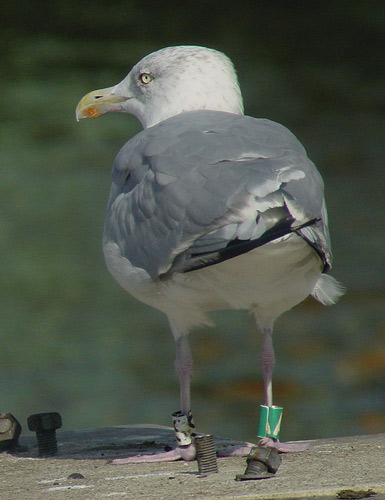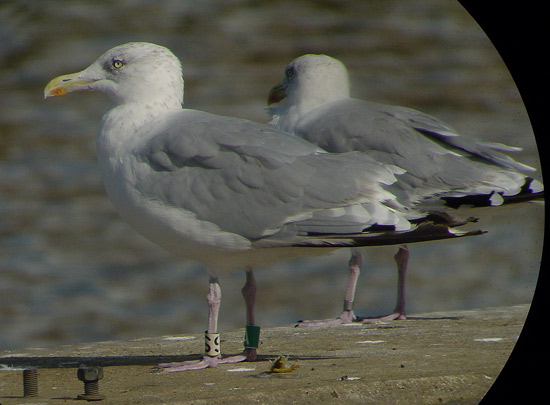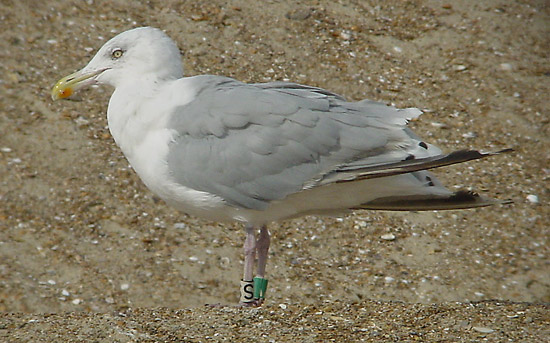 Herring
Gull - Zilvermeeuw (argentatus & argenteus)
Herring
Gull - Zilvermeeuw (argentatus & argenteus)
(last update: 08 december 2003)
Home
Links
to Gull Sites
Gull Taxa
Gull Topography
Grey & Colour Charts
Locations in NW Europe
Summaries of Articles
About ORG
@
Herring Gull SAadult (argenteus), Sept 24 2002 & Sept 26 2003, IJmuiden, the Netherlands (52.27N-04.33E).
A Dutch ringed adult: left white S, right green A. A typical Dutch argenteus, with a very small reduced black triangle on the outer-web of P5. P6 has an unbroken sub-terminal band and P10, which is heavily worn by September, has a complete sub-terminal band as well. Note the fine head streaking and the on-going moult in the central greater coverts. SA was ringed on the isle of Texel.
From June (often mid-May in France, Belgium and the Netherlands) to October, a complete moult will bring birds in so-called "adult winter" plumage. A new set of primaries will grow during the summer months and by September, the outermost primaries P9-P10 are still present in argenteus in the Netherlands and northern France. In most adults, the new primary P6 is just visible beneath the tertials and shows a clear sub-terminal band. At the same time, the median coverts, outer lower lesser and outer greater coverts have been renewed and strongly contrast with the old, abraded adjacent wing-coverts. In summer, the head is still largely white, but by September, most adults develop extensive 'winter streaking', in sub-adults strongly mottled brown contrasting with the white breast as in an executioner's hood. The scapular coverts are plain grey, lacking white crescents. The tertials show obvious white tips. The iris is yellow. The bill is yellow with a red gonydeal spot confined to the lower mandible. The orbital ring is yellow-orange in most argenteus.
 (Sept 24 2002)
(Sept 24 2002)
 (Sept 24 2002)
(Sept 24 2002)
 (Sept
26 2003)
(Sept
26 2003)